Documentary : Disaster , Disaster Management
![]()
“Bring Happiness to the World” A Miracle Song Born in Kobe
DC372017![]()
しあわせ運べるように阪神淡路大震災25年 ~神戸が生んだ奇跡の歌の物語~ [NHK]
![]()
![]()
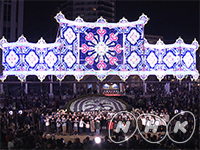
|Length : 50min |Year : 2020 |
"Bring Happiness to the World" was written after the 1995 Great Hanshin-Awaji Earthquake in Kobe. "Strength no earthquake can defeat... We'll restore our wounded Kobe to be as it was." A rallying cry for hope in areas hit by natural disasters, it has been sung across Japan and in many other countries. People encouraged by its message have hailed it as a 'miracle' song. The former Yamakoshi village still sings it at memorial services. A children's choir based out of temporary housing in Kumamoto performs the song for others. Discover the extraordinary power of this 25-year-old song as it brings together disaster survivors around the world.
Ise Bay Typhoon 1959 Color and Memory
DC372016![]()
伊勢湾台風60年 色と記憶 [CBC]
![]()
![]()
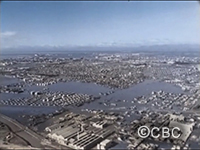
|Length : 50min |Year : 2020 |
Typhoon Ise Bay, which occurred on September 26, 1959, left 5,098 people dead or missing. Sixty years have passed since then.
In our coverage of the past, there is a common refrain among those who experienced the typhoon.
"The sky the next day was an abominable blue".
How did that blue sky look like?
This in mind led the journalist to make this documentary, a color version of the footage from that time.
What was that typhoon? What were the lessons to be learned from it?
Blackout in Hokkaido ~Two Days for 5.3 Million People~
DC372015![]()
ブラックアウト ~530万人の2日間~ [HTB]
![]()
![]()
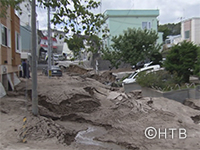
|Length : 25min |Year : 2020 |
On September 6th, 2018, Hokkaido was struck by the Eastern Iburi Earthquake.
After the earthquake, 2.95 million households lost their power in a blackout like never seen before.
Hokkaido fell into panic.
How did the citizens feel, and what did they do?
What did the citizens lack?
What did they want? How did they use social media?
Our reporting identified the reality of the citizens' lives, to find the issues that need to be tackled.
Children’s Message of the Devastating Earthquake to the Next Millennium
DC371514![]()
女川いのちを守る会~1000年後へのメッセージ~ [KHB]
![]()
![]()
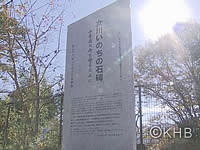
|Length : 24min |Year : 2015 |
When the Great East Japan Earthquake struck, waves as high as 14.8 meters ravaged Onagawa Town. 827 lives, nearly 10 percent of the population, were lost and 70 percent of the town buildings were destroyed.
The seventh graders of Onagawa Middle School decided to do something to pass on the lessons of this tragedy to future generations. With the motto “to protect the lives of 1000 years from now,” they continue their work and hope to reach their goal of erecting 21 stone monuments by the time they are 20 years old.
Three Years After the “Giant Tsunami”
DC371413![]()
わ・す・れ・な・い [CX]
![]()
![]()
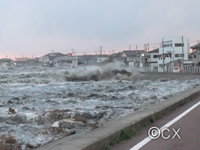
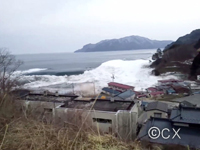
|Length : 60min. |Year : 2014 |
On March 11, 2014, the Great East Japan Earthquake and Tsunami struck Japan. “Shedding New Light: Three Years After the ‘Giant Tsunami’” examines numerous videos and witness interviews to reconstruct a chronological account of the tsunami, and provides a detailed analysis of why the “giant tsunami” had caused such devastating damage.
Using footages from the day of the quake and its aftermath along with most advanced technology, new unexpected facts were revealed in a new light: A 7-meter tsunami attacked Asahi, Chiba close to Tokyo. What happened there and why, 330 kilometers from the epicenter and three hours after the earthquake? In Ishinomaki, Miyagi, one building saved hundreds of lives. What does it teach us about future tsunami measures? The height of tsunami surged up to 40 meters and was higher in Iwate than Miyagi. What triggered it and what was the driving mechanism behind this monstrous tsunami?
The documentary also shows for the first time the video of a high school girl being rescued from mud after she was swept by the tsunami. Although she was miraculously saved, she couldn’t let go of the feelings of guilt for being the one who survived while the lives of many others were lost in the disaster. However, now that over three years has passed, she finally became able to accept the reality and made a decision to speak in front of a camera to tell her story and messages she must deliver as a survivor.
The Great East Japan Earthquake and Tsunami left over 10,000 people dead or missing. This documentary not only captures the unfolding human drama but also reminds audience that our hearts will always be with the afflicted people and the regions, and that the lessons we learned will never be forgotten.















